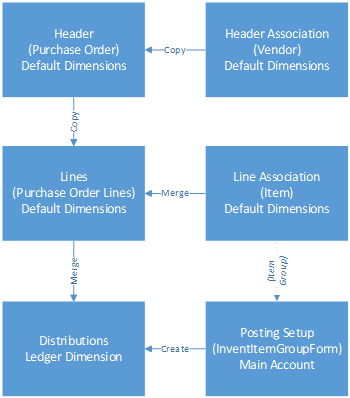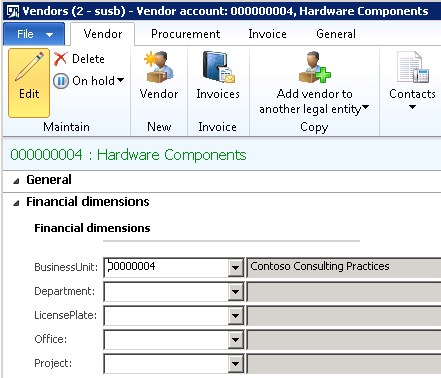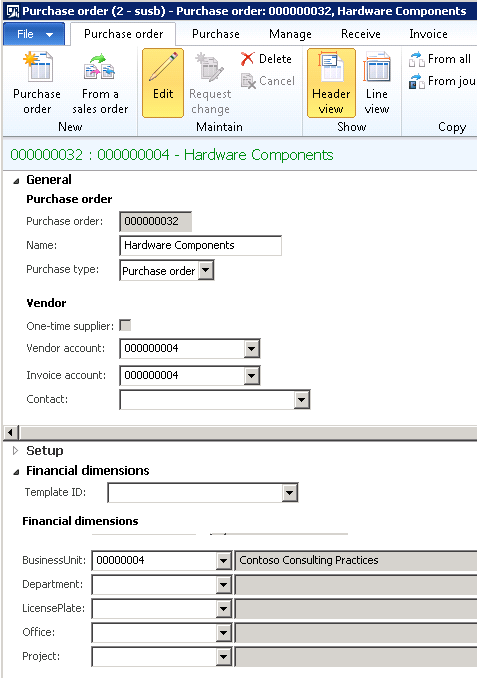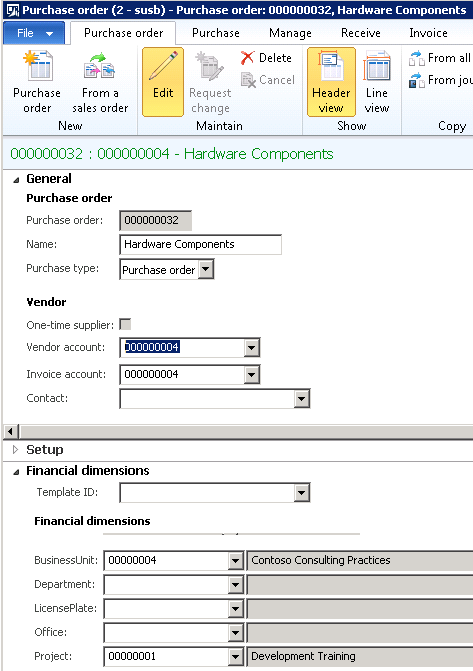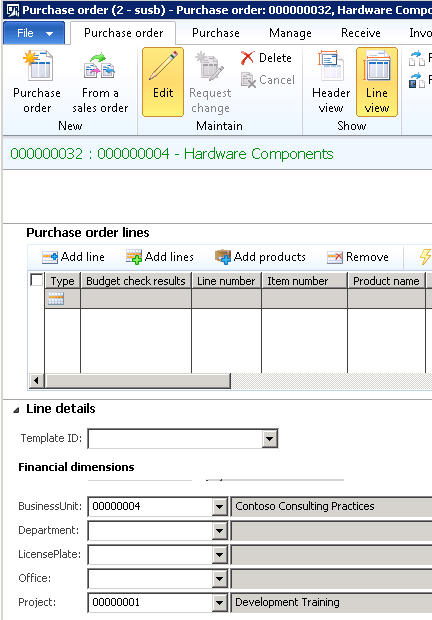Dimension defaulting - Part 3 (Copy patterns)
Introduction
Continuing this series of blog posts, this section covers
how default dimensions are copied between entities.
This blog post series includes:
- Financial dimensions discovery
- Control uptake and storage
- Copy patterns (this post)
- Merging patterns
- Ledger dimension creation
- Common pattern APIs
- Advanced topics
Copy versus merge
As initially described in the Dimension defaulting in accounting distributions series of blog posts, default dimensions are typically copied or merged with other dimension combinations to create ledger account dimensions. The dimension framework does not set the precedence for defaulting. Each form or process determines this based on their business logic needs.
A hypothetical order document will serve as the basis for the examples below. This could be a service order interacting with customers and containing line item services, or a purchase order interacting with vendors and line item inventory items. In terms of where default dimensions are entered, they could be entered or overridden at different points in processing as shown in Figure 1 below.
Figure 1: Default dimension sources on a typical document
In the example of an order document, there are multiple default dimensions that are available for the business logic to consider. The document header may have a set of default dimensions like the purchase order in this example. The customer or vendor of the order, such as the vendor in this case, has a set of default dimensions as well. Depending on the business logic of the order, these different sets of default dimensions may have different precedence when combined together. Some may have higher precedence and replace other default dimensions while others may be merged together.
Default dimension copy
Figure 2 below shows a default dimension entered on a specific vendor account. Figure 3 below shows the SQL query for the default dimension reference on the vendor record and the resulting default dimension created.
Figure 2: Default dimensions entered on a vendor account
Figure 3: SQL query and output showing default dimensions on vendor record
Figures 4 and 5 below shows a new purchase order created for this vendor and the SQL query and default dimension reference on the header record. In this case the dimensions from the vendor replaced any dimensions already on the purchase order header as soon as a vendor is selected, so a direct copy of the default dimension foreign key was all that needed to be done as shown in Figure 6.
Figure 4: Default dimension copied to a document header (Purchase order)
Figure 5: SQL query and output showing default dimensions on purchase order record
Figure 6: Code used to copy default dimensions from the vendor to the purchase order
Next, suppose the user enters a value for the Project dimension. Figure 7 below, shows the header dimensions after that change. Figure 8 shows the SQL query for the default dimension reference on the header record and the resulting default dimension created.
Figure 7: Default dimension modified by a user on a document header (Purchase order)
Figure 8: SQL query and output showing updated default dimensions on purchase order record
Next, as the user changes to the Line view to enter the lines, Figures 9 and 10 below show default dimensions copied from the purchase order header and the code copying the foreign key reference to the line. In this case, the line has not yet been saved so the default dimension foreign key only appears in the table buffer in memory.
Figure 9: Default dimension copied to a document line (Purchase order line)
Figure 10: Code used to copy default dimensions from the header to the line
This example will be continued in the next blog post where a line with an item is added to this purchase order, where dimensions will be merged instead of copied.
